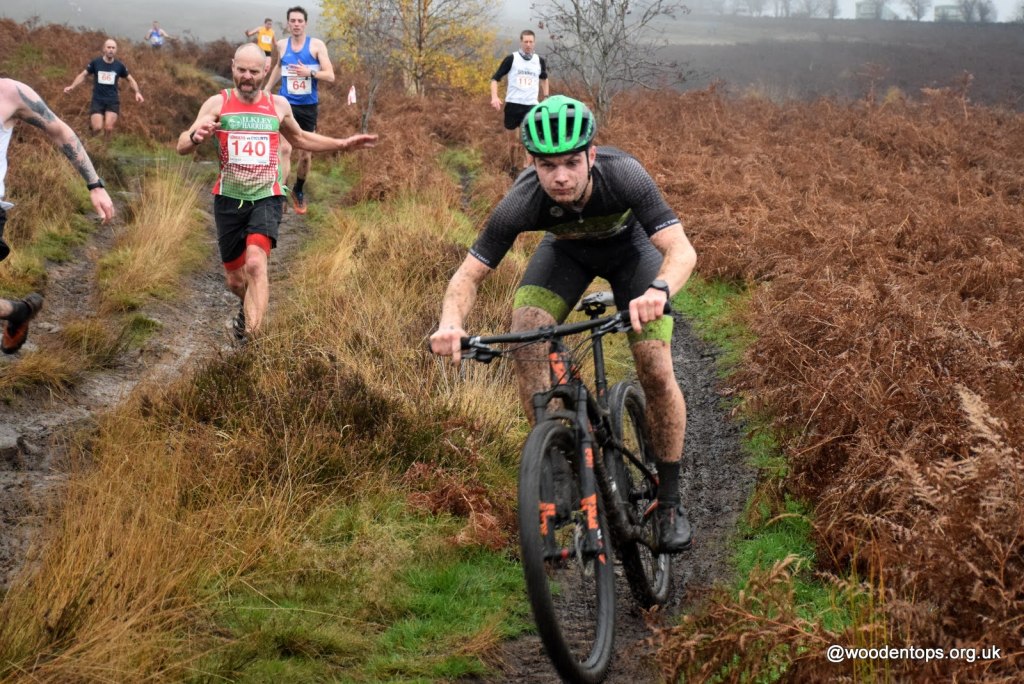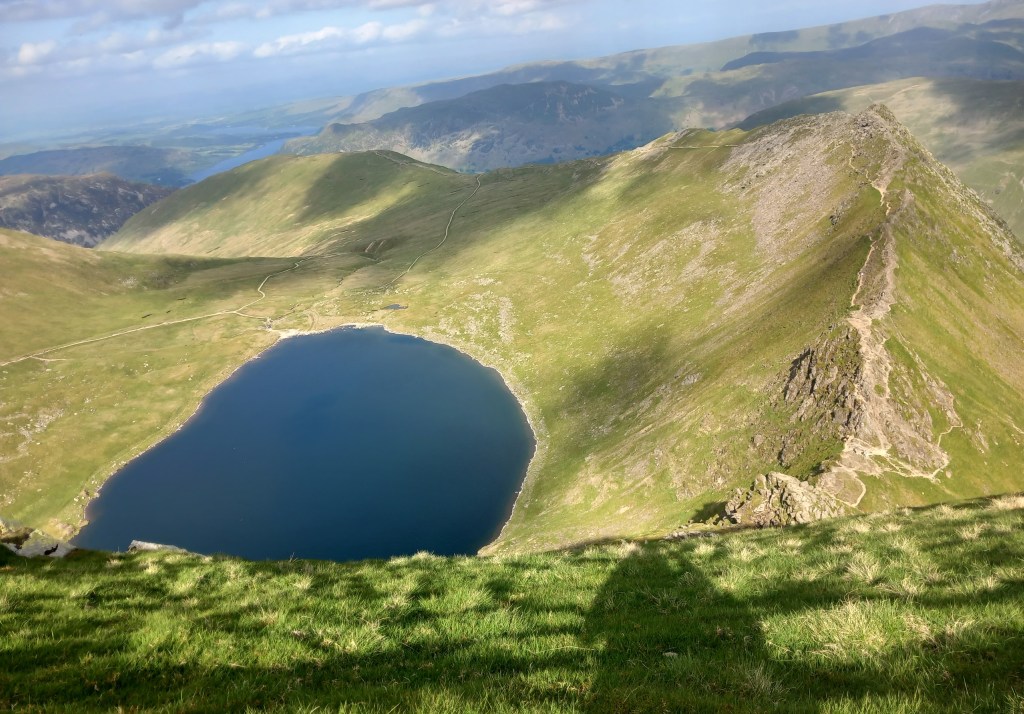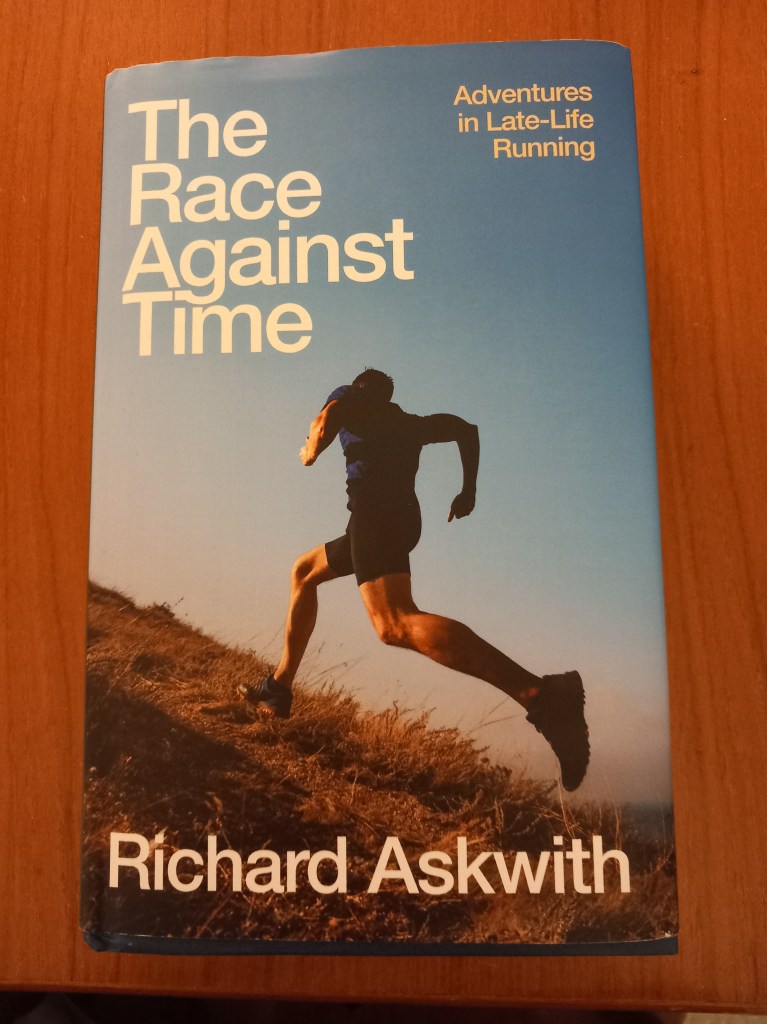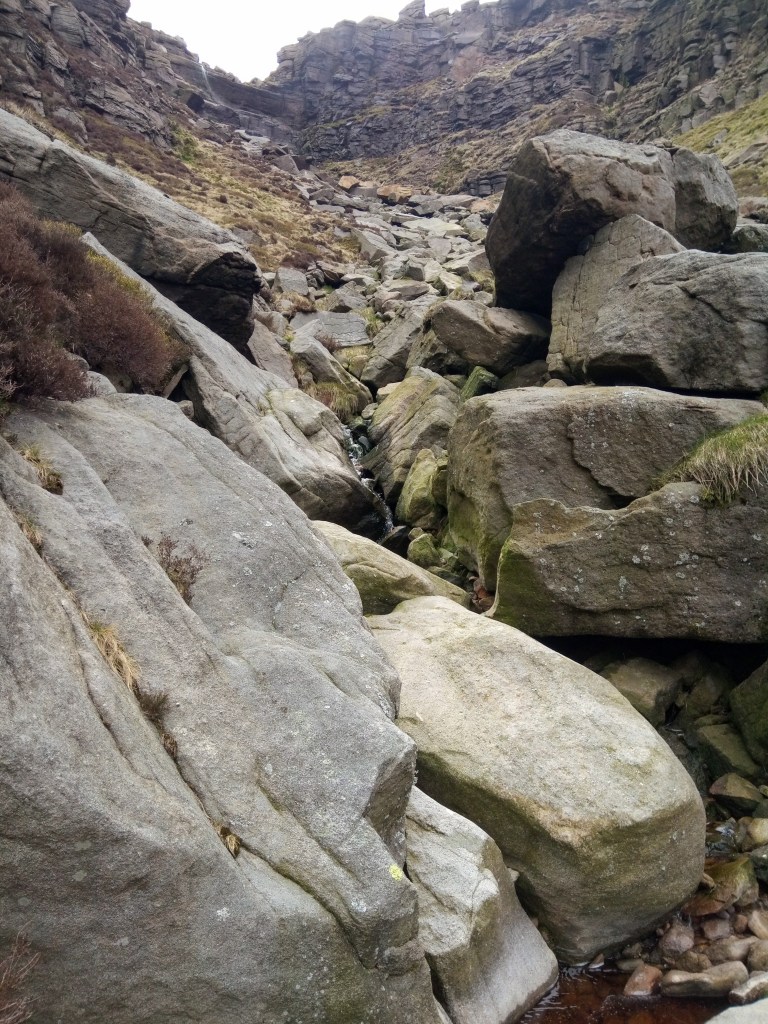Over the last couple of months I’ve been working my way around the Calderdale Way in various stages, 50 miles or so in total with 2500 metres of ascent. The original idea was to do it in 6 stages, clockwise, to correspond with the format of the Calderdale Way Relay in May. This would mean driving to each start point and, having completed each leg, returning there either on foot or by public transport. I’ve previously ticked off completions of the Leeds Country Way and Bradford Millennium Way, so Calderdale felt like the next obvious circuit to tackle. I was also inspired by reading various books and maps by Chris Goddard, which really bring the area to life and I highly recommend. Here’s how I got on:
Sun 24 Jan 2024: Shelf to Salterhebble return, 26km, 715m (Leg 6)
I chose to start at the point of the CW closest to my home in Bradford, namely Shelf to the east of Halifax, mainly to minimise driving. Confusingly, this meant that my first run was going to be Leg 6 of the relay route, the second run Leg 1 and so on, finishing with Leg 5. Well, it made sense in my head.
Initially, a 20-minute drive to Shelf early on a Sunday morning. Ideally I prefer quiet car parks over parking on the street, particularly at this time of year – gives you a bit more space to change your socks and bang your shoes at the end of a muddy run. Shelf has such a car park, but a sign saying it would be locked at 4pm put me off, so the main road it was. I’m a bit of a pessimist and didn’t want to fret about some random delay getting me back late, running is much about letting stupid worries in life drain away.
The first bit was generally downhill towards Brighouse, through woods and fields. Last time I was here was 2006, running Leg 6 for Valley Striders in the relay. It was a December event then – leg partner Steve and I set off with the mass start at 2pm and got to the finish in the dark, no headtorch. I remembered bits and pieces of that as I went along. Midway I weaved my way through the streets of Brighouse, onto the canal, past the impressive flour mill/climbing wall, up through some woods and then more road. In fact, I was to find that the CW overall has a surprising amount of tarmac – perhaps 10% of the whole route – although this did provide some relief from the otherwise incessant mud.
A very bad bit of road came at Salterhebble where they’re building a new stretch of highway. Roadworks blocked the pavement that you’re meant to run along, so I had to take my chances dodging traffic and cones in a contraflow system. Better was the return to Shelf via the Hebble Trail into Halifax, then climbing Beacon Hill and back via Shibden Park. I had a quick look at Shibden Hall (closed for winter), 19th-century home of Anne Lister, famous for her 4 million-word private diary written in code (now cracked and translated). Eventually back to the car with half the mud of Calderdale attached to legs and shoes, this was to be the theme from now on.
Sat 3 Feb: Salterhebble to Cragg Vale, 33km, 670m (Leg 1)
I pulled up at another car park with a suspicious-looking gate, next to the canal. No off-putting signs this time though, so I risked it.
A mile along the road, into the woods then immediately lost the route, adding half a mile. The first of a few similar errors all-told. I was relying for nav. on the paper OS South Pennines map, which wasn’t always clear or easy to keep dry.
Above North Dean Woods I passed close to Stainland Rec, which according to Chris used to host games of “Knur & Spell”. A bit of googling later revealed this to be a quaint Yorkshire tradition, colloquially poor-man’s golf. The idea being to smack a ball suspended in a sling as far as possible with a wooden club. It was also played in Barnsley, and contests used to be described as the world championships. There are a couple of unintentionally-hilarious old videos on youtube that are beyond parody. Much better than real golf.
Onto Norland Moor, an unusual flat expense of heather on high ground. Approaching the edge, a cold wind and lashing rain really swept in. The next bit to Ripponden was just survival, but there was some respite once down in the valley.
Further on I found more shelter on top of the next moor, in what appeared to be something like a wartime pill-box. In fact, Chris reveals it to be a WW2 bombing decoy bunker, a so-called Starfish site. Fire and light displays on the moor were coordinated from here to divert German bombers from their intended urban targets. There’s no great evidence these were successful, but their existence says much about those times.
Finally, descending to Cragg Vale the battering from the weather relented and the return jog was surprisingly pleasant. Initially down the valley of Cragg Vale itself, full of lovely woods, a lively river and interesting early-industrial remains. Then along the canal from Mytholmroyd – a bit of a long drag but a quick off-road return to base.
Thurs 15 Feb, Cragg Vale to Todmorden, 9km, 270m (Leg 2)
Quite a straightforward leg this, along a mile of road to the reservoir, up and over the moor to Mankinholes, then down through the fields to Tod.
I quite like the bit by the reservoir as back in 2002 I had a fellrunning “Road to Damascus” experience here. I had just moved to West Yorkshire and was out for a solo ramble in January, getting increasingly cold, when a fast runner came past me from behind. He was followed shortly after by another, and turning I saw a field of 100 more on the way, a fell race no less. I immediately thought that looked much more fun than getting cold in walking boots, joined a fellrunning club shortly afterwards and have never looked back.
Another bit of reminiscing came later on, passing YHA Mankinholes. I was employed by YHA from 2019 to 2022 and my time there included a week looking after this hostel. It was a doddle really as I just had to clear up after one group left and get the place ready for another arriving. But it was one of many hostels YHA put on the market last year, so it may not be a YH much longer.
It had only taken an hour to get to Tod and I was weighing up how to get back to Cragg Vale. My first thought was to quickly look in at the station and see when the next train to Mytholmroyd was. Answer – it was on the platform, so having confirmed with the assistant that I could buy a ticket on the train I jumped on. The train passed through Hebden and I motioned to get off at Mytholmroyd. The train sped straight through, and didn’t stop until Halifax. On the platform the assistant asked me what I was doing there, why hadn’t I changed at Hebden? Pleading ignorance I asked for advice. Get on the next train to Brighouse, then change. An hour after last seeing Mytholmroyd, I eventually alighted at it. The jog back up Cragg Vale lightened my mood.
Sat 2 March, Todmorden to Luddendenfoot, 33km, 940m (Legs 3 + 4)
This turned out to be much the toughest outing – length, climb, weather, underfoot conditions. Ironically, it was the one I felt best on, and decided to extend further than originally planned.
Rather than finding a spot in Tod itself, I parked in the free car park by the main road a mile out of town, and jogged in along the canal. I passed a community allotment (there’s a lot of that kind of thing in Calderdale) with a sign warning “Trespassers will be Composted”. I should have taken a photo of this rotten gag – nearly 30 years ago my first paid job was to encourage people to make compost and I still have a bin at home.
The CW makes a slightly unnecessary loop around Tod, bringing you out about a mile up the road after 4 miles and a big hill of effort. Another long climb brought me out onto more exposed terrain, with snow flurries and a churning mix of snow and mud underfoot. Progress was snail-like through this. But things got a bit easier around Heptonstall, which had been a possible turn-around point, and I found myself carrying on down to Midgehole. Again, I gave turning around some thought but chose to press on, perhaps thinking I should get this CW thing boxed off while I’m here rather than plan too many more wet and cold days out. Up top I skirted the edge of Midgley Moor. It felt a bit 50-50 to be up there in these conditions, but if I wanted to bail I could be off in just a few minutes. It turned out OK though and eventually the CW drops off the moor to Jerusalem Farm, where I finally decided I’d had enough. A 2 mile jog down the road brought me out at Luddendenfoot. The bus stop showed just a 10-minute wait, and 15 minutes after that I was back at the car. Public transport’s great when it works.
Sun 17 March, Shelf to Booth, 16km, 450m (Leg 5)
So, just the final leg to go, Jerusalem Farm to Shelf. My original plan was to do it as a there and back from Shelf, so I could say I’d done the whole thing in a clockwise direction. But this day didn’t bode well for such a long run. I was nursing a sore hamstring and the weather remained drizzly. I set off from Shelf gingerly, walking mainly to start with and jogging the easy bits. Normally, things get easier once you’re underway but events contrived to chip away at my enthusiasm. The mud was glutinous and I made one, then a second route-finding mistake. I didn’t really have the heart to go back and follow the route-proper, which was fiddly and erratically marked. For much of the CW you see the familiar waymark logo and could almost navigate without a map, but there are stretches where it’s not obvious at all, such as this. It took 2 and a half hours to do the 10 miles to Jerusalem Farm, and I wasn’t going to turn round and repeat it. This time, I walked up the hill to Booth and found a bus was due in 15 minutes. This gave me time to get my leggings and shoes off and make myself presentable. The bus took me round the houses but eventually to Halifax, where I changed for one back to Shelf. I was content this meant I had now completed a full circuit of the Calderdale Way.
To sum up….
The CW is a challenging route, up and down over mixed terrain of moors, fields, tracks and tarmac. I did it at the most difficult time of year, often in cold and rain and with plentiful mud underfoot. Route-finding is often straightforward, but not always (anyone doing the Relay in May should certainly recce their leg in advance). The scenery is generally very good and there’s much of interest on the way. Shops and places of refreshment are available on the route itself most obviously at Brighouse, Ripponden and Todmorden. The valley’s bus and train links give good options for doing circular ventures, with the route passing close to the train stations at Brighouse and Tod.
I mentioned at the start that I’ve previously done the Leeds Country Way and Bradford Millennium Way. By that I mean I have completed both of those in several stages first, before doing a full circuit in a single day. Doing the Calderdale Way in a single day would be noticeably tougher, and at present it feels well beyond me. Saying that, others have done it…..
Coincidentally, a few weeks ago Chris published a map of the CW, which is a nice momento of the route and full of detail about points of interest along the way – available on his site for £6.99. It would also be good for route-planning; I’m sure spring and summer on the Calderdale Way are nicer than the conditions I encountered, there won’t always be all that mud.
















